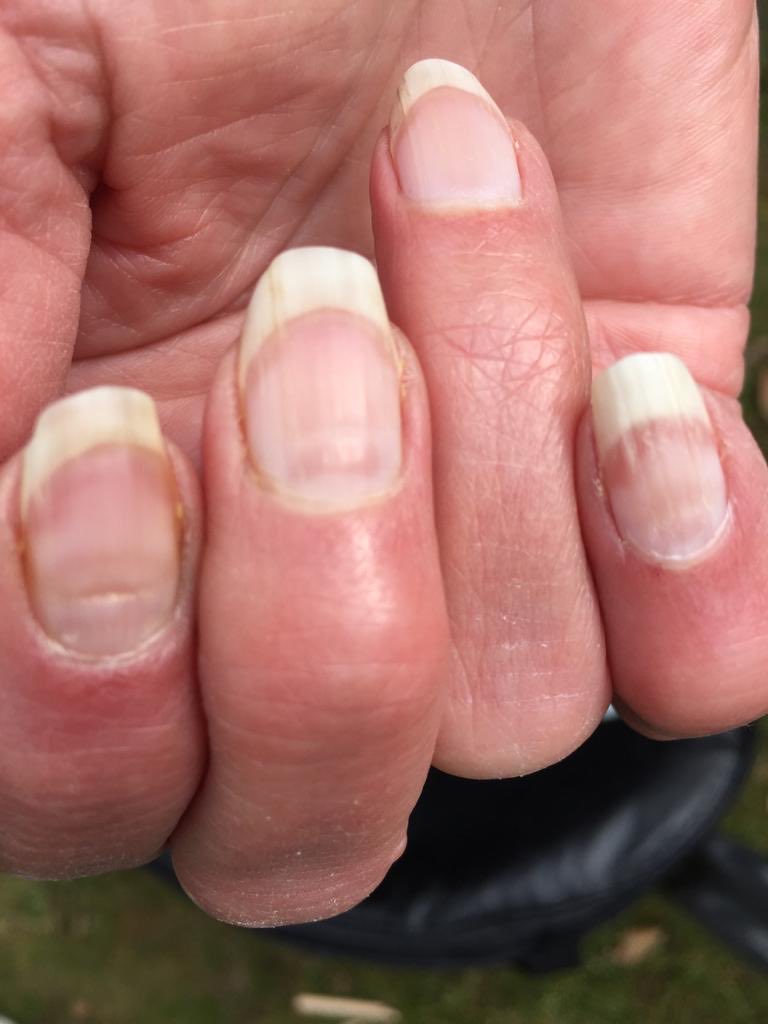Not Sure You Had Covid? Your Nails Might Offer Some Clues.
Share

As much as we now know about COVID-19 since its spread in late 2019, there is still a fair account of ambiguity in regards to its symptoms: such as hair loss, “COVID toes”, “COVID tongue”, and now, “COVID nails”.
More recently, visible changes in COVID-survivors’ nails have been making rounds on social media. Termed “COVID nails” by U.K.-based epidemiologist, Dr. Tim Spector, the early reports are making assertions that it may be a way to tell whether someone was infected by the virus. In a recent case study published in the Canadian Medical Association Journal, a 45-year old man developed horizontal grooves on his nail plates and toenails, 3 months and a half post-COVID infection. However, other experts caution relying on nails as proof of past infection.
So why do these lines form?
During regular check-ups, you may notice that your physician occasionally checks your nails. He/she isn’t simply checking on your manicures or nail hygiene, your physician is looking for signs of illness through Beau’s lines that can potentially be seen on your nail plates (see diagram below). Beau’s lines are horizontal ridges that go across your whole nail. While they can be caused by nail picking or infections around the fingertips, they can also be a sign of serious illness, especially if seen across multiple nails. Interestingly, a number of illnesses can interrupt your nail growth: from kidney failure to pneumonia. As nail growth is relatively slow, most people notice other symptoms which accompany the disease first before observing Beau’s lines.
Beau’s lines are believed to form due to a brief disruption in the nail growth cycle but the exact mechanism for their formation is not exactly known. It is believed that any physiological disruption due to systemic illness or medical treatment such as chemotherapy, surgery, flu, etc could cause it. It is also reported that some deep-sea divers and high altitude hikers have witnessed the appearance of Beau’s lines. Now, not everyone develops Beau’s lines as all bodies react differently to environmental change or medical events.

Is it sound to rely on Beau’s lines as a sign of previous COVID infection?
Not just yet! Beau’s lines have not been added as an official symptom of COVID-19, though there are case studies that support the notion that they could indicate previous COVID infection. Some researchers say that Beau’s lines could be used to narrow down when acute COVID infection took place, based on nail growth rate. As the toenails grow at a rate of about 1.6 mm per month, the distance between Beau’s lines from the base of the nail (proximal nailfold, see diagram above) reflects the timing of severe infection.
A big caveat of COVID nails is specificity since having these ridges can also be a sign of other infections or underlying diseases including hypertension, epilepsy, eczema, severe malnutrition, and chemotherapy. Therefore, Beau’s lines can’t be used as the sole indicator of previous COVID infection. A more robust study is needed before any conclusions can be drawn about Beau’s lines and retrospective COVID diagnosis.
Beau’s lines themselves are harmless and typically go away as the nail goes through a full growth cycle in few months. If they reappear for whatever reason, it might be worth bringing it up to your primary care provider as it may be an indication of some underlying condition.
For more information about COVID-19, please refer to the Center for Disease Control resources available on https://www.cdc.gov/coronavirus/2019-ncov/
References:
1. ZOE Covid 2019 Symptom Study Accessed May 13, 2021.
2. Saud Alobaida, Joseph M. Lam. Beau lines associated with COVID-19 CMAJ Sep 2020, 192 (36) E1040. [Pubmed]
3. Baswan S, Kasting GB, Li SK, Wickett R, Adams B, Eurich S, Schamper R. Understanding the formidable nail barrier: A review of the nail microstructure, composition and diseases. Mycoses. 2017 May;60(5):284-295. [Pubmed]
4. Schwartz H. Clinical observation: Beau’s lines on fingernails after deep saturation dives. Undersea Hyperb Med. 2006 Jan-Feb;33(1):5-10. [Pubmed]
5. Bellis F, Nickol A. Everest nails: a prospective study on the incidence of Beau’s lines after time spent at high altitude. High Alt Med Biol. 2005 Summer;6(2):178-80. [Pubmed]
6. Cover image credit – Dr. Tim Spector
7. Baran Robert and Maibach Howard. Textbook of Cosmetic Dermatology. CRC Press. 5th Edition.
If you enjoyed our content, please share, comment, like and follow us on your favorite platforms!
.
.

